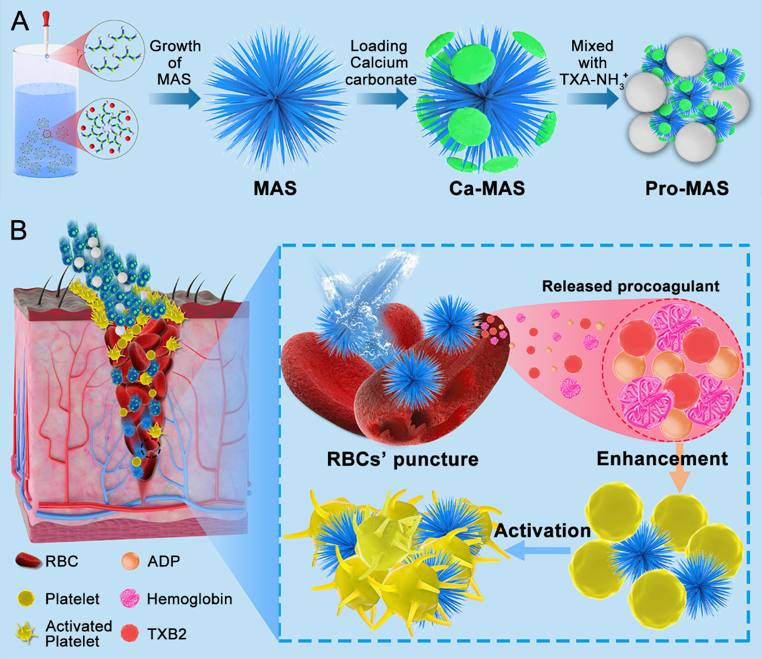Chestnut-like macro-acanthosphere triggered hemostasis: a featured mechanism based on puncturing red blood cells. Nanoscale 2021, 13(21), 9843-9852.
Published in Nanoscale, 2021

Acute hemorrhage that occurs after trauma is a life-threatening condition. Hence, to halt massive bleeding, there is a critical need to develop a suitable therapy. In this study, we developed self-propelling chestnut-like particles (Pro-MAS) comprising a macro-acanthosphere (MAS) coated with calcium carbonate and protonated tranexamic acid to puncture red blood cells (RBCs) and thus activate hemostasis. In vitro assessments revealed that Pro-MAS was biocompatible, biodegradable, and nontoxic; furthermore, it was capable of puncturing RBCs to release procoagulants and activate platelet aggregation for hemostasis. Animal tests showed that self-propelling Pro-MAS effectively traveled through blood flow to the deep ends of wounds; hemorrhage was controlled within 90 s and 4 min in the injured liver and bleeding femoral artery, respectively. Compared with a commercial hemostat, superior hemostasis was achieved with Pro-MAS, which could be ascribed to its functional and structural features. Overall, traveling Pro-MAS possessed sufficient impact force to puncture RBCs and sufficient momentum to reach the targeted bleeding sites. The present study demonstrated the ability of a novel platform, self-propelling MAS particles, to trigger hemostasis by puncturing RBCs. To the best of our knowledge, this is the first trial in which the release of endogenous procoagulants is promoted without the addition of exogenous procoagulants for severe hemorrhage control.
